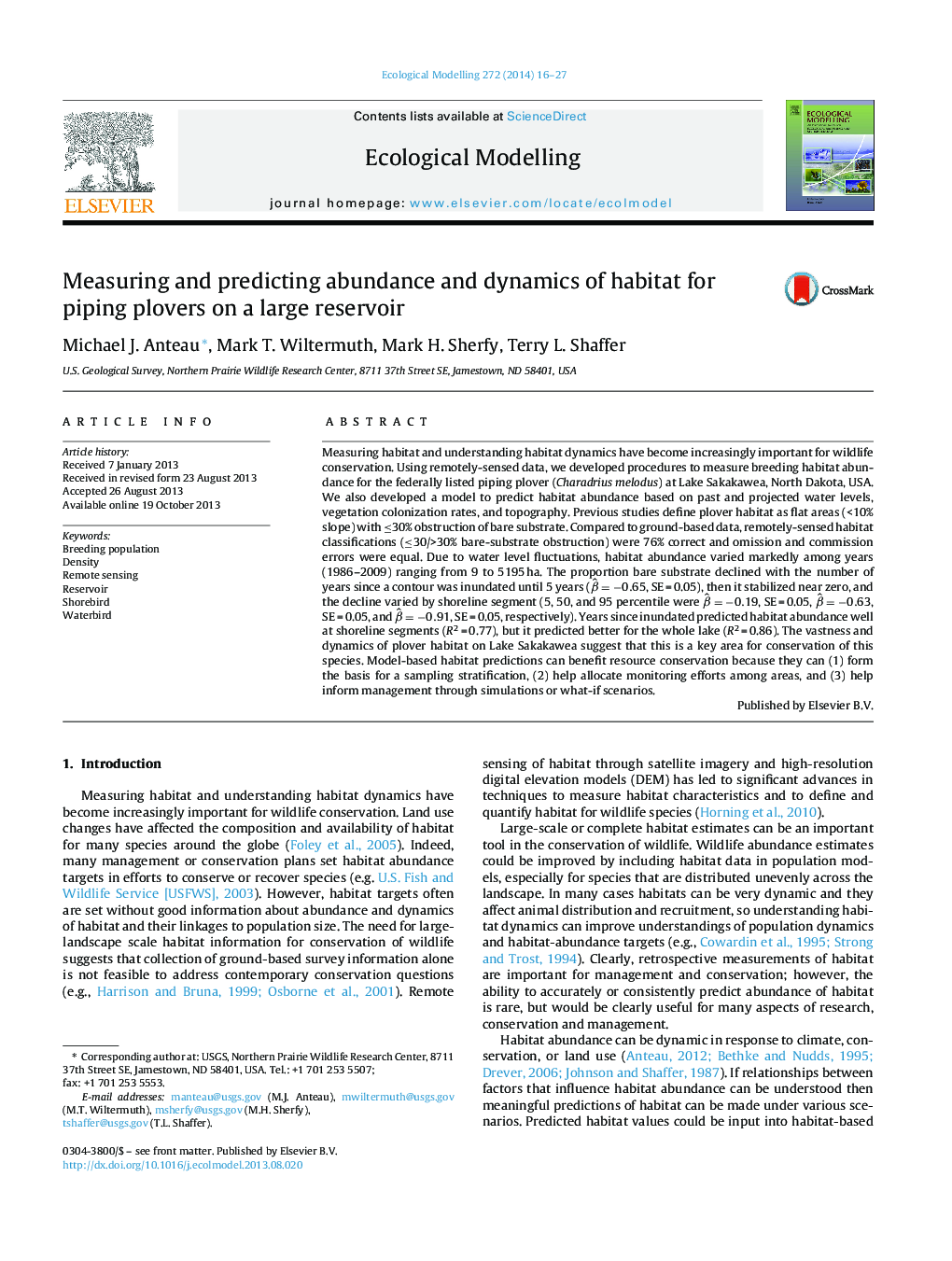| کد مقاله | کد نشریه | سال انتشار | مقاله انگلیسی | نسخه تمام متن |
|---|---|---|---|---|
| 6296979 | 1617474 | 2014 | 12 صفحه PDF | دانلود رایگان |
عنوان انگلیسی مقاله ISI
Measuring and predicting abundance and dynamics of habitat for piping plovers on a large reservoir
ترجمه فارسی عنوان
اندازه گیری و پیش بینی فراوانی و دینامیک زیستگاه برای تهیه لوله های پلاستیکی در یک مخزن بزرگ
دانلود مقاله + سفارش ترجمه
دانلود مقاله ISI انگلیسی
رایگان برای ایرانیان
کلمات کلیدی
موضوعات مرتبط
علوم زیستی و بیوفناوری
علوم کشاورزی و بیولوژیک
بوم شناسی، تکامل، رفتار و سامانه شناسی
چکیده انگلیسی
Measuring habitat and understanding habitat dynamics have become increasingly important for wildlife conservation. Using remotely-sensed data, we developed procedures to measure breeding habitat abundance for the federally listed piping plover (Charadrius melodus) at Lake Sakakawea, North Dakota, USA. We also developed a model to predict habitat abundance based on past and projected water levels, vegetation colonization rates, and topography. Previous studies define plover habitat as flat areas (<10% slope) with â¤30% obstruction of bare substrate. Compared to ground-based data, remotely-sensed habitat classifications (â¤30/>30% bare-substrate obstruction) were 76% correct and omission and commission errors were equal. Due to water level fluctuations, habitat abundance varied markedly among years (1986-2009) ranging from 9 to 5195 ha. The proportion bare substrate declined with the number of years since a contour was inundated until 5 years (βË=â0.65, SE = 0.05), then it stabilized near zero, and the decline varied by shoreline segment (5, 50, and 95 percentile were βË=â0.19, SE = 0.05, βË=â0.63, SE = 0.05, and βË=â0.91, SE = 0.05, respectively). Years since inundated predicted habitat abundance well at shoreline segments (R2 = 0.77), but it predicted better for the whole lake (R2 = 0.86). The vastness and dynamics of plover habitat on Lake Sakakawea suggest that this is a key area for conservation of this species. Model-based habitat predictions can benefit resource conservation because they can (1) form the basis for a sampling stratification, (2) help allocate monitoring efforts among areas, and (3) help inform management through simulations or what-if scenarios.
ناشر
Database: Elsevier - ScienceDirect (ساینس دایرکت)
Journal: Ecological Modelling - Volume 272, 24 January 2014, Pages 16-27
Journal: Ecological Modelling - Volume 272, 24 January 2014, Pages 16-27
نویسندگان
Michael J. Anteau, Mark T. Wiltermuth, Mark H. Sherfy, Terry L. Shaffer,
